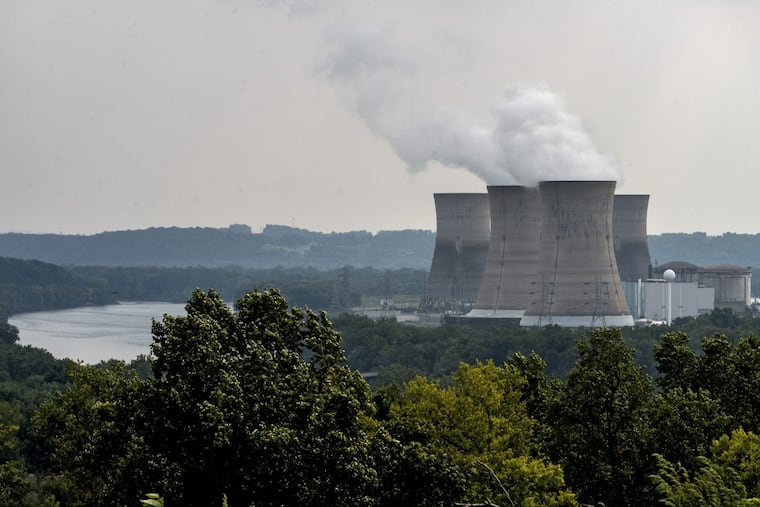Three Mile Island’s 60-year shutdown: ‘More akin to a marathon than a sprint'
The Three Mile Island Unit 1 nuclear reactor shutdown, set to begin in September, would take nearly 60 years and $1.2 billion to complete

The Three Mile Island Unit 1 nuclear reactor shutdown, which is set to begin no later than Sept. 30, will take nearly 60 years and $1.2 billion to complete.
The Nuclear Regulatory Commission (NRC) is outlining Exelon Generation’s plans to decommission TMI Unit 1, whose closure was announced in May after it became clear that the Pennsylvania General Assembly would not approve a financial rescue of the state’s nuclear plants. The federal agency is conducting a public webinar on Tuesday afternoon on the decommissioning, and a public meeting in Harrisburg next week.
Exelon’s decommissioning schedule, which was spelled out in a plan released in April, calls for the immediate removal of Unit 1′s nuclear fuel from the reactor after shutdown. The uranium fuel-rod assemblies would cool in spent fuel pools for three years until they are moved to above-ground sealed canisters in 2022.
But the reactor’s cooling towers and other large components would remain standing until 2074, according to Exelon’s Post-Shutdown Decommissioning Activities Report. All radioactive material would be safely stored or removed from the site by 2078.
A plant decommissioning is “more akin to a marathon than a sprint,” Jack Parrott, senior project manager of the NRC’s reactor decommissioning branch, told reporters in a briefing Tuesday. The NRC’s interest is to oversee decontamination and removal of radioactive material from the site; restoration of the site to a greenfield is managed by the state and the property owner.
Under federal regulations, plant operators have 60 years to clean up a site after a plant closes. The long-term decommissioning method, called SAFSTOR, allows radioactive levels to decline for decades before workers have to dismantle contaminated components, the NRC says.
Exelon said the $1.2 billion cost to decommissioning the plant would be financed from a trust fund into which the power plant’s customers have paid since the plant went online in 1974. Exelon or its successors would be responsible for paying any fund shortfall.
The advantage of the more rapid decontamination strategy is that it allows the owner to employ workers experienced with the plant. It also makes the site available for reuse sooner.
Exelon acquired Unit 1 in 1999, two decades after the infamous nuclear accident that destroyed its twin in the nation’s worst commercial accident. The damaged reactor, owned by FirstEnergy Corp., is now dormant and is awaiting full decommissioning in tandem with the shutdown of Exelon’s plant.
The NRC will hold a public meeting on July 23 in Harrisburg to discuss the plant’s decommissioning plans.
Exelon said that the 837-megawatt reactor, which employs nearly 700 people, would reduce the staffing level to 300 after shutdown. A skeleton workforce of 50 would remain in place after 2022 to secure the site and the 1,200 tons of spent fuel stored in special steel casks.
The NRC is conducting a public webinar at 1 p.m. Tuesday to provide information about how the agency regulates the decommissioning. Online registration is required to take part.
The NRC will also hold a public meeting on July 23 at the Sheraton Harrisburg Hershey Hotel, 4650 Lindle Rd., Harrisburg, to discuss the Post-Shutdown Decommissioning Activities Report for the plant. Written comments can be submitted to the NRC through Oct. 9.